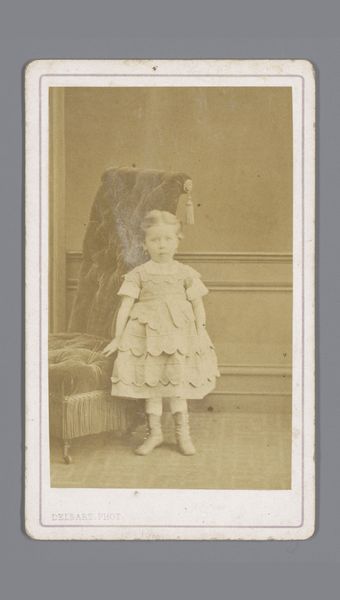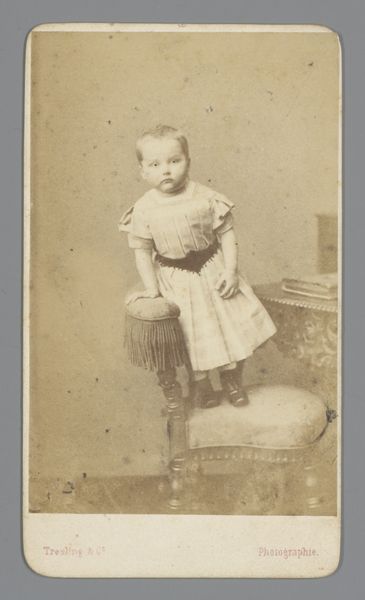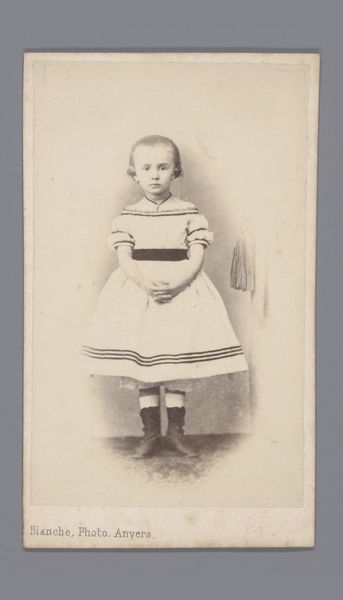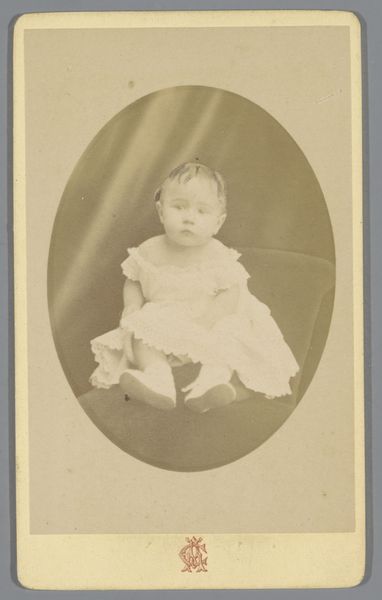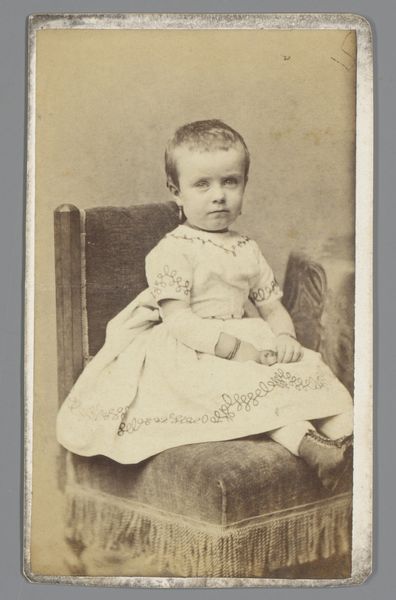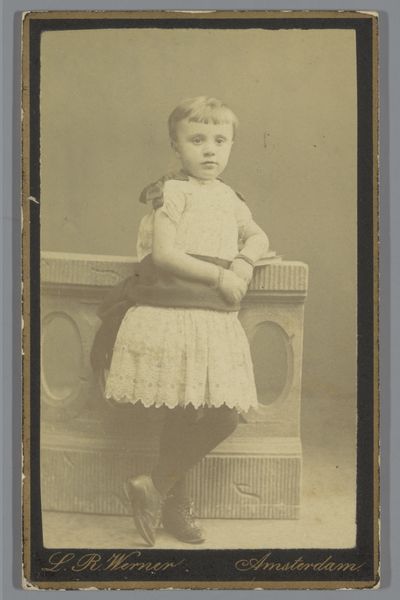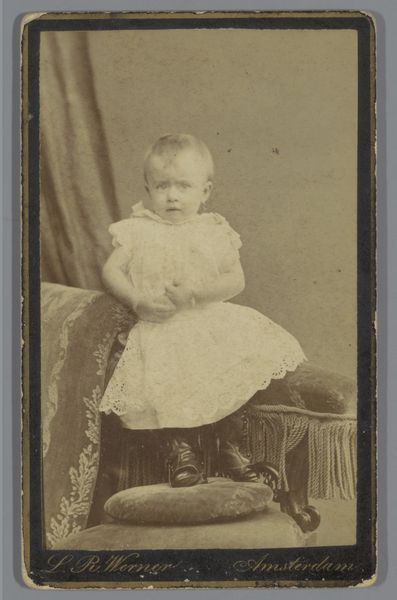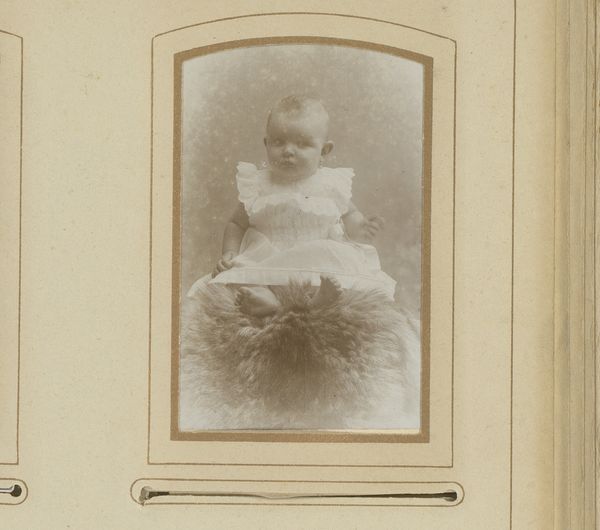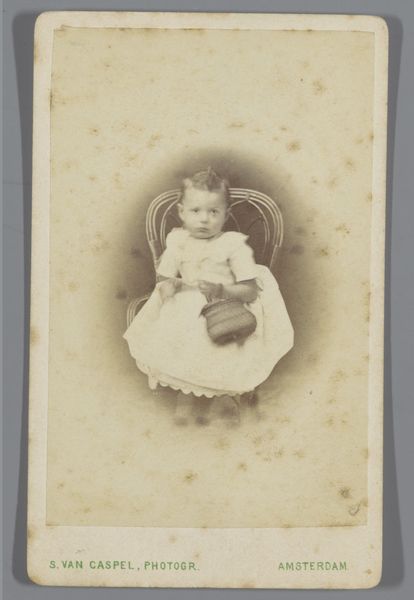
paper, photography, gelatin-silver-print
#
portrait
#
dutch-golden-age
#
paper
#
photography
#
coloured pencil
#
gelatin-silver-print
#
genre-painting
Dimensions: height 105 mm, width 63 mm
Copyright: Rijks Museum: Open Domain
Editor: This is "Portret van een onbekend meisje, staande op een stoel," taken between 1868 and 1905, a gelatin-silver print. There’s a striking stillness to the photograph, even for a portrait. How do you interpret this work? Curator: It's compelling, isn't it? The portrait presents us with more than just an image of a child; it’s a social artifact, deeply embedded in the politics of representation of the late 19th century. Who was this girl? And, perhaps more importantly, who decided she was worth photographing and preserving? How did class, gender, and the then-burgeoning field of photography intersect to create this particular image? Editor: I hadn't considered the socio-political context so directly. I was focused on the simple fact it’s an image of a child from a very long time ago! Curator: Exactly! The child is positioned in a carefully constructed scene, seemingly innocent, yet participating in a system that dictated who was seen and remembered. It begs the question, was this photograph intended as a marker of sentimental value, or did it function as a display of social status, a testament to the family's ability to participate in photographic culture? Editor: So, it's not just a picture; it's a statement? Curator: Precisely! Photography then was often used to reinforce societal norms and power structures. Exploring the history helps us decipher how these images perpetuate or subvert dominant narratives around childhood, gender, and class. How do you think children’s photographs function today in relation to the picture you see before you? Editor: That is such an important point, one to reflect on further in contemporary times. Thanks, I see it very differently now. Curator: The pleasure is mine. Examining the roots allows us to interpret and potentially redirect our visual future.
Comments
No comments
Be the first to comment and join the conversation on the ultimate creative platform.
